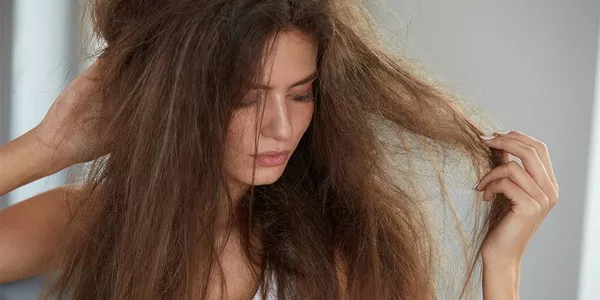The pursuit of luscious, healthy hair is a desire shared by many. However, hair damage can often be a roadblock on the path to achieving those flowing locks we dream of. One of the primary causes of hair damage is the impairment of hair follicles, which can lead to issues such as hair loss, thinning, and brittleness. But is all hope lost when it comes to damaged hair follicles? In this article, we will delve into the science behind hair follicles, explore the causes of damage, and discuss whether repairing damaged hair follicles is truly possible.
Understanding the Hair Follicle: The Root of Hair Health
Before we can explore the concept of repairing damaged hair follicles, it is crucial to understand the role they play in maintaining hair health. The hair follicle is a tiny, complex structure located beneath the scalp’s surface. It serves as the foundation from which hair grows and plays a vital role in the overall hair growth cycle.
1. The Causes of Hair Follicle Damage: Unveiling the Culprits
Hair follicles can sustain damage from various external and internal factors. Here are some of the most common causes:
a) Physical Trauma and Chemical Damage: Excessive heat styling, chemical treatments, and harsh hair products can take a toll on hair follicles. These practices can lead to structural damage, such as weakened hair shafts and follicular inflammation.
b) Nutritional Deficiencies: Poor nutrition, specifically deficiencies in essential vitamins and minerals like biotin, iron, and zinc, can negatively impact the health of hair follicles, leading to weakened hair and increased shedding.
c) Hormonal Imbalances: Hormonal imbalances, such as those experienced during pregnancy, menopause, or conditions like polycystic ovary syndrome (PCOS), can disrupt the hair growth cycle, resulting in hair loss or thinning.
d) Genetic Predisposition: Some individuals may have inherited genes that make their hair follicles more susceptible to damage and subsequent hair loss. Conditions like androgenetic alopecia, commonly known as male or female pattern baldness, can be influenced by genetic factors.
2. The Quest for Repair: Exploring Potential Solutions
While the extent of repair achievable may vary based on the severity and underlying cause of the hair follicle damage, there are promising strategies and treatments available. Let’s delve into a few:
a) Topical Solutions and Medications: Certain topical solutions and medications can be used to stimulate hair growth and repair damaged hair follicles. Minoxidil and finasteride are two commonly prescribed medications that have shown efficacy in promoting hair regrowth and preventing further hair loss.
b) Platelet-Rich Plasma (PRP) Therapy: PRP therapy involves injecting a concentrated solution of the patient’s own platelets into the scalp to stimulate hair growth. This treatment has shown promising results in repairing damaged hair follicles, particularly in cases of androgenetic alopecia.
c) Laser Therapy: Low-level laser therapy (LLLT) is a non-invasive procedure that uses red light to stimulate blood circulation and promote hair regrowth. LLLT has been found to improve hair density and enhance the overall health of damaged hair follicles.
d) Hair Transplantation: In cases where hair follicle damage is severe, hair transplantation can be considered. This procedure involves transplanting healthy hair follicles from one area of the scalp to the damaged areas, promoting the growth of new, healthy hair.
3. Nurturing Hair Follicles: The Role of Hair Care
While repairing damaged hair follicles through medical interventions is important, adopting a comprehensive hair care routine is equally crucial in maintaining and optimizing the health of your hair follicles. Here are some key practices to consider:
a) Gentle Cleansing and Conditioning: Choose shampoos and conditioners that are gentle and free from harsh chemicals. Avoid overwashing your hair, as it can strip away natural oils that nourish the hair follicles. Opt for sulfate-free products that promote hydration and strengthen the hair.
b) Nourishing Nutrients: A well-balanced diet rich in essential nutrients can contribute to healthy hair follicles. Incorporate foods that are abundant in proteins, vitamins (especially A, B, C, and E), minerals, and omega-3 fatty acids. These nutrients help nourish the hair follicles from within.
c) Scalp Massage: Regular scalp massages improve blood circulation to the hair follicles, promoting their health and stimulating hair growth. Gently massage your scalp with your fingertips in circular motions for a few minutes each day.
d) Protection from Heat and UV Damage: Excessive heat from styling tools and prolonged exposure to UV radiation can damage hair follicles. Protect your hair by using heat protectant sprays before styling and wearing hats or using UV-protective hair products when exposed to the sun for extended periods.
e) Avoiding Hairstyles that Cause Tension: Tight hairstyles like ponytails, braids, or buns that exert excessive tension on the hair follicles can lead to traction alopecia and damage the follicles. Opt for looser hairstyles and avoid using rubber bands or accessories that pull on the hair.
4. Seeking Professional Advice
If you are concerned about damaged hair follicles or experiencing significant hair loss, it is essential to seek professional advice from a dermatologist or trichologist. These specialists can diagnose the underlying cause of the damage and recommend appropriate treatments tailored to your specific needs.
Conclusion: The Hope for Healthy Hair Follicles
While repairing damaged hair follicles completely may not always be possible, there are various solutions and strategies available to improve their health and promote hair growth. From topical medications and PRP therapy to laser treatments and hair transplantation, medical interventions offer hope for individuals struggling with hair follicle damage. Furthermore, incorporating a nurturing hair care routine can support and optimize the health of your hair follicles. Remember, healthy hair begins at the root, and by understanding the causes of damage and exploring appropriate treatments, you can embark on a journey towards healthier, more vibrant locks.
So, if you’ve been longing for your hair to regain its former glory, take heart. With the right approach and a little perseverance, damaged hair follicles can be on their way to restoration, allowing you to embrace the beautiful hair you deserve.

